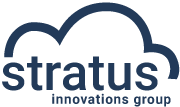What Is a Virtual Datacenter, and How Can It Drive Business Value?

An Abridged History of Physical Datacenters
Data storage, processing, access, and security have become mission-critical components of every business’ operations over the last several decades. Up until recent advancements in cloud computing, businesses have built physical datacenters for all their information technology (IT) needs.
For small operations, these internal (or “enterprise”) datacenters could be housed in a single room. From there, optimizing IT equipment performance and security involved additional support infrastructure. For example:
- The room needed to be climate controlled for humidity and temperature using special heating, ventilation, and air conditioning (HVAC) systems such as a computer room air conditioning (CRAC) unit.
- To ensure access to data around the clock, backup power sources needed to be implemented, such as generators or battery banks.
- To secure the equipment, safeguards like keyed access, biometrics, and video monitoring were put in place.
Scaling up operations then required huge investments in new space, equipment, and support infrastructure as well as IT staff. For added data security, remote datacenters could be built to avoid losses due to disasters, outages, or other catastrophes.
Soon, companies were building huge datacenters and leasing space (either physical or virtual) to businesses so they wouldn’t have to invest in all that infrastructure themselves.
The history of datacenters, then, is one of decentralization. Moving vital IT infrastructure away from a central location reduces the risk of losses and outages. At the same time, decentralization provides greater accessibility via increased reliability and operational flexibility.
The natural next step in datacenter evolution is moving IT infrastructure to the cloud.
What Is Infrastructure as a Service (IaaS)?
Infrastructure as a service (IaaS) is a cloud computing model that includes the implementation of virtual datacenters. Broadly, IaaS involves a cloud provider building up the physical components needed for a datacenter, such as:
- Disaster-resistant buildings
- Climate control
- Backup power measures
- Server racks
- Servers
- Storage hardware
- Networking hardware
- Security equipment and staff
- Other support staff
In addition, an IaaS provider can offer services such as network performance monitoring, network security and firewall management, data redundancy across multiple physical locations, and more.
What Is a Virtual Datacenter (VDC)?
Virtual datacenters are essentially just a designated supply of cloud-based resources within existing physical hardware. Instead of having servers and all their associated infrastructure at your business, you have a pool of virtual servers available whenever you need them.
Access to your virtual datacenter can be provided over the internet or a virtual private network (VPN). Virtual datacenters are also completely compatible with existing physical networks. Virtual resources can simply be available for emergencies, your business’ entire IT infrastructure can be shifted over to the cloud, or you can utilize a hybrid solution anywhere in between.
The Business Case for IaaS and Virtual Datacenters
The primary benefits of IaaS and virtual datacenters for businesses of every size are compelling:
Operational Agility and Scalability
With IaaS, businesses are not required to invest their time and capital in all the real estate, equipment, and staff required to build an on-premises datacenter. Since all those resources (and more) are already in place thanks to the provider, businesses can scale up or down on the fly as needed.
Lower, More Predictable IT Costs
Since businesses simply pay for the resources they are using, costs are predictable. Similarly, all of the long-term costs associated with developing and maintaining an in-house datacenter are avoided.
Freedom to Focus on Your Business, Not the Business of IT
Instead of devoting huge portions of your organization’s budget to building and operating an on-premises datacenter, you can focus on your actual business.
Increased Data Security and Continuity
With a virtual datacenter, your business can continue to operate during outages or disasters. Also, both physical and digital security can be enhanced through the use of IaaS.
Perhaps one of the greatest benefits of implementing a virtual datacenter for your business is that you can get incredible savings by working with Stratus Innovations Group.
Stratus Innovations Group Can Help Your Business Plan, Build, and Manage a Virtual Datacenter
Whether you are facing the expenses associated with a technology refresh, you are looking for a more sustainable IT cost model, or you want to realize any of the other benefits listed above, working with Stratus Innovations Group is the right choice.
Our team of experts at Stratus Innovations Group can help you at every stage of virtual datacenter implementation:
- Integrating your existing IT infrastructure with virtual assets
- Centralizing user account management through Active Directory
- Extending your data security with disaster recovery as a service (DRaaS)
To find out how we can help extend your business to the cloud, call us toll-free at 844-561-6721 or fill out our simple online contact form.
